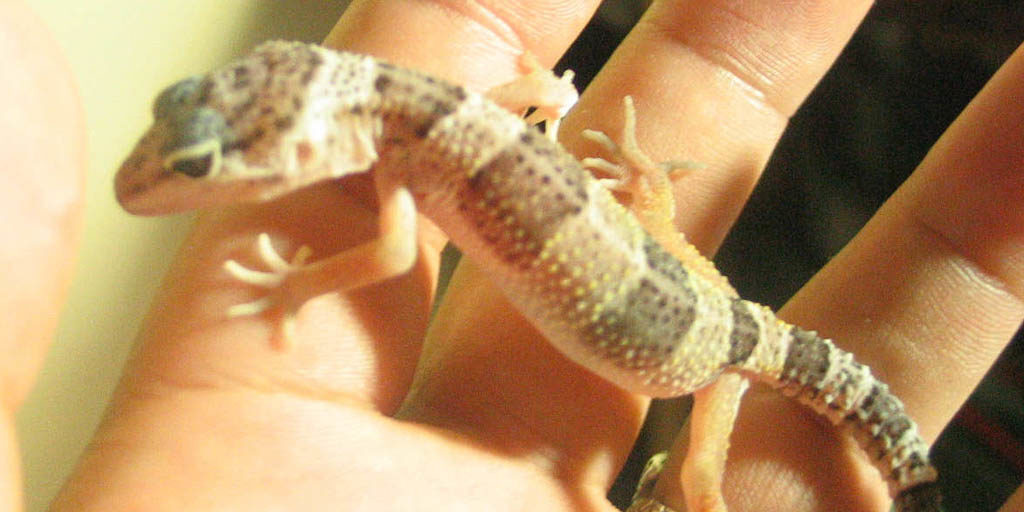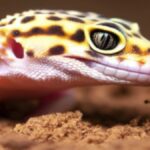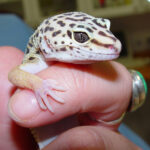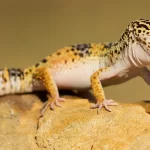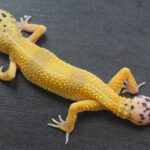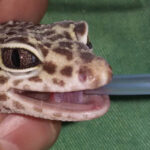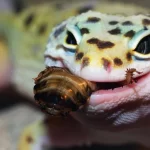Fluid treatment, also known as fluid therapy, fluid replacement or fluid resuscitation, is the practice of replacing body fluids that have been lost. Factors such as timing, type and quantity of fluid and route of administration need to be considered when treating fluid loss in Leopard geckos.
Introduction
Water is the single most important medium for sustaining life(47). Studies have shown that the percentage of total body water (TBW) is higher in reptiles (up to 75%) than in mammalian species (60-70%)(48). TBW is distributed between intracellular fluid (ICF) and extracellular fluid (ECF) compartments. The ICF makes up 66% of total body water, while the ECF compartment makes up 33%. Water moves freely throughout most parts of the body(48).
Over the last couple of decades, there has been a lot of advanced made in our understanding of fluid treatment in Leopard geckos and other reptiles. As with humans and, for example, dogs and cats, many Leopard gecko lives have been saved by correcting dehydration under life-threatening situations. Although there are some ways Leopard geckos can attempt fluid treatment at home, specialised veterinary products, accessories and knowledge will often be required in these situations.
Leopard geckos can lose body fluids in cases such as trauma/bleeding (blood is also a fluid) or when they are not taking in enough fluids to sustain their body functions (aka dehydration). In most cases, dehydration is caused by chronic (long term) inability to sustain or replace fluids. Blood loss is more often acute (over a short period of time). Fluid treatment protocols will be different for acute and chronic fluid loss. Chronic blood loss can also be as a result of decreased red blood cell production.
Before fluid treatment is initiated, it is essential to identify the cause of fluid loss. Hydration and blood loss needs to be addressed before feeding is commenced(38) – even if it takes days. Normovolemia also needs to be established before other organ system abnormalities are addressed. Various treatment protocols will be more efficient in properly hydrated patients. Fluid treatment principles in Leopard geckos and other reptiles are similar to that of mammalian patients.
Also see
Nutritional support for Leopard geckos
Quick notes in shock treatment
Hypovolemic and septic shock, severe blood loss, and/or severe acid-base disturbances will require fluid resuscitation(42) (shock treatment). Note that, unlike in mammals, reptiles are able to maintain hemodynamic stability even in the case of substantial blood loss. This is because of a rapid shift of interstitial fluid into the vascular space(42).
In order to assess clinical signs better, admitted patients can be transferred to an enclosure/incubator with a temperature set to the middle range between 25 – 30 ºC / 77 – 86 ºF(23). Allow at least 30 minutes for the patient to be warmed up. During this time, the same incubator can be used to pre-warm the resuscitation fluids.
In a normothermic environment, clinical signs consistent with needing shock treatment include(42):
- Weakness
- Hypothermia (especially appendages)
- Prolonged capillary refill time
- Pale mucous membrane colour
- Tachycardia or bradycardia
For shock treatment, crystalloids in combination with colloids are recommended. Isotonic crystalloids (e.g. 0.9% physiologic saline, Plasma-Lyte A, Normosol-R and Lactated Ringers solution) can be given at a rate of 5 – 10 ml/kg followed by 3 – 5 ml/kg of a colloid solution (e.g. 10% HAES-steril). Each of them is given interosseus (see more below) as a slow bolus over 5 – 10 minutes(42).
Dehydration
Dehydration is the common term used when the body is depleted of fluids. When total fluid loss exceeds fluid intake, a fluid deficit – clinically recognized as dehydration – occurs. In most cases, dehydration is caused by chronic (long term) inability to sustain or replace fluids.
Common reasons for dehydration in Leopard geckos include diseases (through, for example, refusal to eat/drink, diarrhoea or regurgitation/bringing up food), physical conditions (making it difficult or impossible to eat/drink) and incorrect husbandry (e.g. where the temperature, humidity or supply of food and water is incorrect).
Exact hydration in Leopard geckos can be tricky to estimate (especially before it is quite advanced), but clinicians often classify dehydration as normal to mild (

